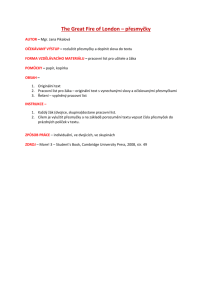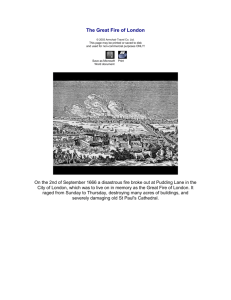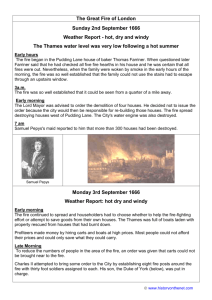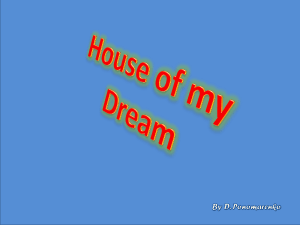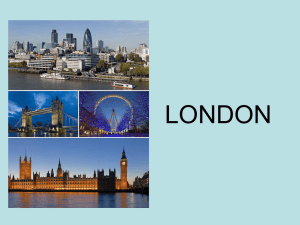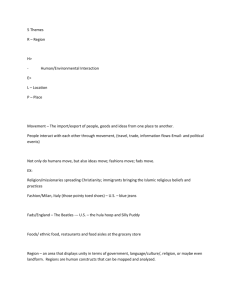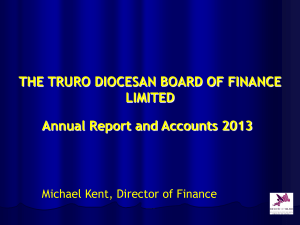The Great Fire of London – rozstříhané věty
advertisement
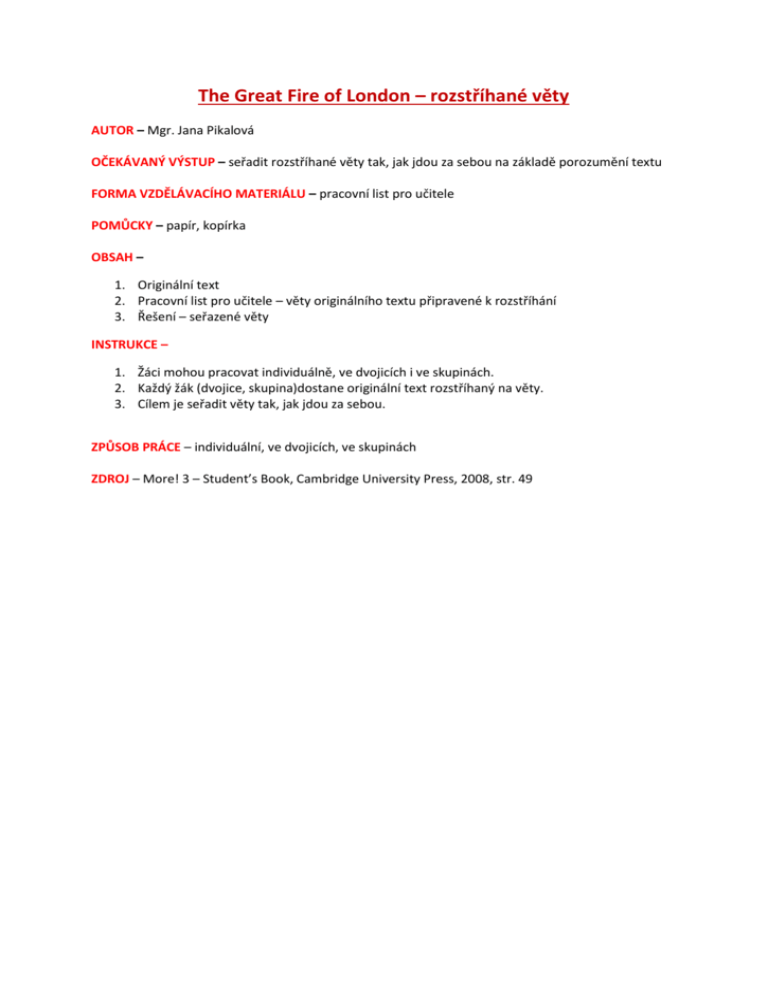
The Great Fire of London – rozstříhané věty AUTOR – Mgr. Jana Pikalová OČEKÁVANÝ VÝSTUP – seřadit rozstříhané věty tak, jak jdou za sebou na základě porozumění textu FORMA VZDĚLÁVACÍHO MATERIÁLU – pracovní list pro učitele POMŮCKY – papír, kopírka OBSAH – 1. Originální text 2. Pracovní list pro učitele – věty originálního textu připravené k rozstříhání 3. Řešení – seřazené věty INSTRUKCE – 1. Žáci mohou pracovat individuálně, ve dvojicích i ve skupinách. 2. Každý žák (dvojice, skupina)dostane originální text rozstříhaný na věty. 3. Cílem je seřadit věty tak, jak jdou za sebou. ZPŮSOB PRÁCE – individuální, ve dvojicích, ve skupinách ZDROJ – More! 3 – Student’s Book, Cambridge University Press, 2008, str. 49 Originální text The Great Fire of London In the 17th century, London was a city of narrow streets and wooden houses. On the evening of Sunday, September 2, 1666, a fire began in a house near London Bridge. The wind was strong, and the fire grew and grew. It went on during Monday and Tuesday. A famous writer called Samuel Pepys was living in London at the time. He wrote this in his diary: “I went out, and walked to the Tower. There I saw all the houses at the end of the bridge on fire. The people of the Tower told me that the fire started in the King’s baker’s house in Pudding Lane. It has already burned down a church and most of Fish Street. Everybody is trying to move their things, or throwing them into the river or taking them to boats.” On Wednesday, the fire got weaker, and on Thursday 6 September, it stopped completely. In those four days, the fire destroyed old St Paul’s Cathedral, 87 other churches and about 13,000 houses - about 80% of the city at that time. But amazingly, only about 15 people died. King Charles II decided to build London again, with wider streets and houses built of brick, not wood. One of the men who rebuilt the city was Christopher Wren, a great architect. His most famous building was the new St Paul’s Cathedral, which is still there now. Near St Paul’s, you can also see ‘The Monument’, a column built in the 1670s to remember the Great Fire. It is very close to the place where the fire began. Pracovní list pro učitele In the 17th century, London was a city of narrow streets and wooden houses. On the evening of Sunday, September 2, 1666, a fire began in a house near London Bridge. The wind was strong, and the fire grew and grew. It went on during Monday and Tuesday. A famous writer called Samuel Pepys was living in London at the time. He wrote this in his diary: “I went out, and walked to the Tower. There I saw all the houses at the end of the bridge on fire. The people of the Tower told me that the fire started in the King’s baker’s house in Pudding Lane. It has already burned down a church and most of Fish Street. Everybody is trying to move their things, or throwing them into the river or taking them to boats.” On Wednesday, the fire got weaker, and on Thursday 6 September, it stopped completely. In those four days, the fire destroyed old St Paul’s Cathedral, 87 other churches and about 13,000 houses - about 80% of the city at that time. But amazingly, only about 15 people died. King Charles II decided to build London again, with wider streets and houses built of brick, not wood. One of the men who rebuilt the city was Christopher Wren, a great architect. His most famous building was the new St Paul’s Cathedral, which is still there now. Near St Paul’s, you can also see ‘The Monument’, a column built in the 1670s to remember the Great Fire. It is very close to the place where the fire began. Řešení 1 2 3 4 5 6 7 8 9 10 11 12 13 14 15 16 17 18 19 In the 17th century, London was a city of narrow streets and wooden houses. On the evening of Sunday, September 2, 1666, a fire began in a house near London Bridge. The wind was strong, and the fire grew and grew. It went on during Monday and Tuesday. A famous writer called Samuel Pepys was living in London at the time. He wrote this in his diary: “I went out, and walked to the Tower. There I saw all the houses at the end of the bridge on fire. The people of the Tower told me that the fire started in the King’s baker’s house in Pudding Lane. It has already burned down a church and most of Fish Street. Everybody is trying to move their things, or throwing them into the river or taking them to boats.” On Wednesday, the fire got weaker, and on Thursday 6 September, it stopped completely. In those four days, the fire destroyed old St Paul’s Cathedral, 87 other churches and about 13,000 houses - about 80% of the city at that time. But amazingly, only about 15 people died. King Charles II decided to build London again, with wider streets and houses built of brick, not wood. One of the men who rebuilt the city was Christopher Wren, a great architect. His most famous building was the new St Paul’s Cathedral, which is still there now. Near St Paul’s, you can also see ‘The Monument’, a column built in the 1670s to remember the Great Fire. It is very close to the place where the fire began.
